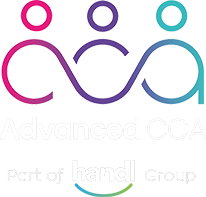On 30th January this year, a twelve-month Reporting Pilot was launched in the Family Court.
The ‘Transparency Principle’
The Reporting Pilot aims to achieve ‘better and purposeful transparency in the family justice system’ to enhance public confidence by extending the pre-existing right of members of the accredited press and legal bloggers to attend private hearings to now enable them to publicly report upon what they see and hear.
Whilst the Reporting Pilot was launched on 30 January, the court had just before that date adopted its intended approach with Mr Justice Poole making a Transparency Order in the case of BR & Ors, Re (Transparency Order: Finding of Fact Hearing) [2023].
Applicability of the Reporting Pilot
The Reporting Pilot currently only applies to cases heard at the Cardiff, Carlisle and Leeds Family Courts. The types of cases covered by the pilot include:-
- All applications for public and private law Orders under Parts II and IV Children Act 1989, including FDAC cases, and applications to discharge, vary or enforce existing Orders.
- All applications for placement orders where the application is made within care proceedings, up to the point at which any placement order is made or the application for a placement order or otherwise is concluded.
- All applications under the inherent jurisdiction of the High Court, including applications to authorise the deprivation of a child’s liberty.
The Reporting Pilot will apply to all the above categories of case heard by any level of judge of the Family Court, or in the Family Division of the High Court. However, initially the Pilot will begin with district, circuit, and High Court judges, and then will be phased to include magistrates at an appropriate point.
The Transparency Principle in Practice
The Transparency Principle is given effect in practice by the making of a Transparency Order (a template of which is included immediately following the President’s Guidance in the link provided).
Subject to the actual terms of the Transparency Order (which will be circumstance specific), it is envisaged that Pilot Reporters (ie members of the accredited press and legal bloggers) will:-
- have an entitlement to access court documents (case outlines, skeleton arguments, summaries, position statements, threshold documents, chronologies and indices from the court bundle) and any other documents with the court’s permission;
- be able to discuss the case with the parties;
- be able to name specific agencies or professionals (including court-appointed experts) involved in the case; and
- be able to report publicly upon what they see and hear without being in breach of section 12 Administration of Justice Act 1960 or section 97 Children Act 1989 and, therefore, with restricted risk of being either found to be in contempt or guilty of an offence.
However, all reporting will be subject to the principles of protection of the anonymity of any
children & families involved unless the Judge orders otherwise (the ‘Anonymity Principle’). Paragraph 19 of the Guidance sets out what MUST NOT be reported (without the court’s permission).
The Court may also depart from the Transparency Principle in any case and in deciding whether to restrict reporting, the Court must ensure the rights of the family and parties to a fair trial under Article 6 ECHR and must balance the rights to a private and family life under Article 8 ECHR, and the rights of the press, public and parties under Article 10 ECHR (or any other relevant rights which may be engaged).
The Reporting Pilot, however, only applies to Pilot Reporters – as such the freedom to report does NOT extend to others (for example the parties involved).
Identification of agencies and professionals
There will be some agencies and professional experts who are understandably guarded by the opening up of the family justice system. There is comfort in familiarity and fear of change. There is also worry that identification of professionals and disclosure of court documents will lead to public ridicule and risk to personal safety.
However, whilst the prospect of public identification has been extended by this Pilot, consideration of the pre-existing case law (for example Re J (A Child) [2013], A v Ward [2010] and X, Y & Z v A Local Authority [2011]) suggests that blanket anonymity for professionals involved in child protection was previously applied neither in principle nor practice.
Safeguarding professionals and experts have also been identified in published judgments (for example (Re W [2021] & J (A Child)(Resolutions Model) (Rev 1) [2021]) or, occasionally, by disgruntled parents on social media platforms.
For safeguarding professionals/experts who are guarded about the Pilot reassurance might be taken from:-
- the court encouraging Pilot Reporters to provide advance notice of their proposed attendance and reporting so interested parties are aware that this is a live issue and can prepare accordingly;
- the court’s ability to depart from the Transparency Principle when circumstances justify this;
- the fact that the Reporting Pilot is just that… a Pilot… it is subject to independent evaluation and lessons will, no doubt, be learnt over its course and inform its development;
- guidelines exist for the media when reporting on social workers; and
- protection & redress remain available under the civil & criminal law and through the Independent Press Standards Organisation.
The opening up of the family justice system could be viewed in a positive way. It constitutes an opportunity for the public to learn of the challenges faced by the sector and, in spite of these, the often amazing work done by safeguarding professionals (including experts) and their contribution to delivering best outcomes for the children and families they work with.
Given the above whilst it is not a completely new world, it does seem to be a brave one. Accordingly, we intend to support our ISWs by:-
- liaising with representative bodies such as Nagalro & BASW and the Transparency Implementation Group to ensure our panel members’ views are heard;
- liaising with instructing parties to obtain advance notice of media interest in cases in which our ISWs are involved;
- liaising with the court to identify cases in which the transparency provisions pose risk to our ISWs; and
- offering case discussions throughout the assessment process and quality assurance checks to ensure that our assessments standup to scrutiny.
If you are a social worker considering a career outside local authority practice or are already practicing as an Independent Social Worker and would like to find out more about how we can support you, get in touch today.



